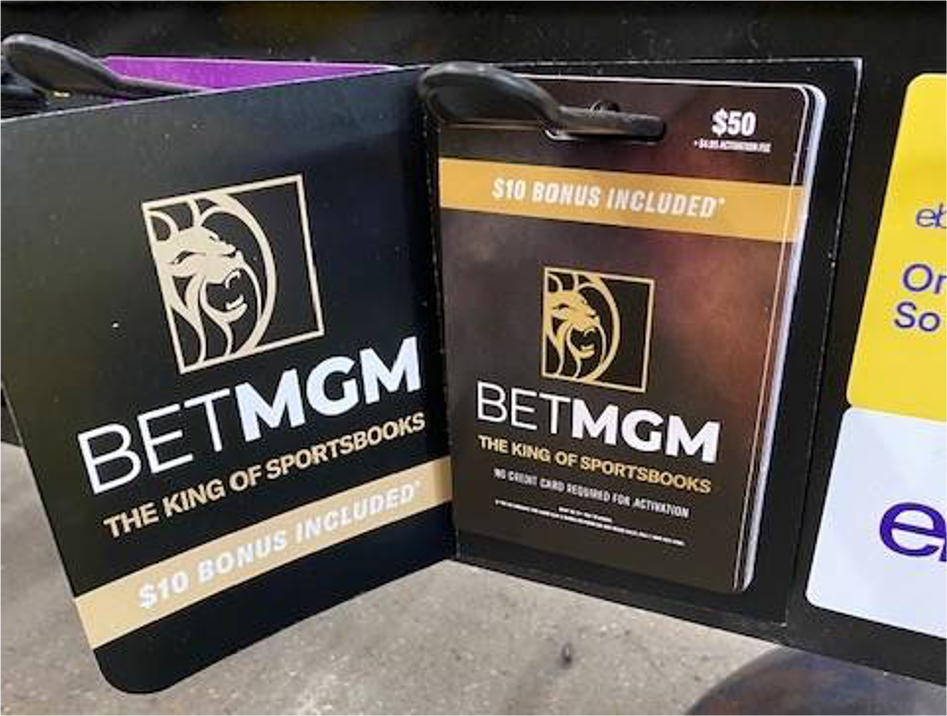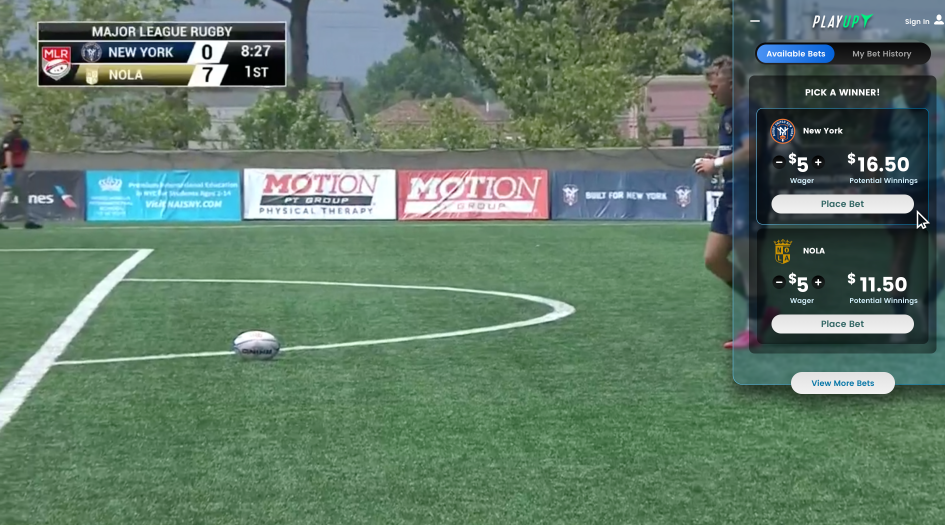Since its legalization, sports gambling has found its way into American life.
Today, wagering on sports is legal in 35 states and the District of Columbia. More than $220 billion has been legally gambled since the landmark Supreme Court decision in 2018.
But despite gambling’s popularity, for years, it hadn’t found its way into live sports broadcasts. That all changed when TAPPP, a New York–based payments processor, developed an integrated streaming and TV betting system that enables fans to point their remote at an on-screen button and place a wager.
“This is a company that is essentially enabling betting to converge with media at scale,” said Michael Proman, Managing Director with Scrum Ventures, a TAPPP investor. “And that is, to me, one of the most exciting storylines that the betting space is going to see for years to come.”
As awareness around TAPPP’s capabilities has grown, Major League Rugby (MLR) took notice and partnered with TAPPP to facilitate an in-game betting experience on the league-owned Rugby Network for the 2024 season. This deal marks a shifting landscape for professional leagues, as the first time a professional sports league has enabled fans to watch games and simultaneously place digital bets. The MLR network has 170,000 subscribers, according to Harry Hardy, the network’s Chief Commercial Officer (CCO).
“What we are trying to do has not really been done before,” said Hardy. “When we talk with other players in the sports betting industry, their eyes kind of open wide: wow, this is something significant.’” For the 2023 season, TAPPP provided a temporary free-to-play system, which mirrors betting but without a financial outlay, to gauge interest. That feature provided a big uptick in engagement among viewers, according to Hardy.
TAPPP and MLR had to navigate significant, complex challenges to bring this partnership to life. Beyond the technology development, TAPPP needed regulatory approval from agencies in states that allow sports gambling. TAPPP’s leaders had to work with connected device makers to ensure its products could be geotracked. Appropriate taxes had to be levied on a state-by-state basis. Regulators also insisted on additional protections for gamblers, including responsible gaming messages and some caps on bettor spending, according to Sandy Agarwal, TAPPP’s founder and Chief Executive Officer (CEO).
Additionally, the ability to offer live betting over a latency-marred streaming service, “has been viewed as something of a white whale for some time,” said John Holden, a business professor at Oklahoma State and an expert on sports gambling. To account for latency, prop bets offered through TAPPP only allow viewers to wager on a future outcome, like whether a team on defense will score when it returns to offense. It’s important to TAPPP to avoid creating disadvantages or spoilers due to latency. Also, odds fluctuate frequently and quickly; the technology has to reflect in-flux betting lines. Agarwal estimates a single game has over a million permutations of bets.
The in-game system is straightforward for bettors. While a game is streaming, a prompting bet button appears intermittently in the lower-right corner of the screen. Using the TV’s remote control, clicking the button reveals a series of sportsbook logos, including FanDuel, DraftKings and BetMGM. The user then chooses their preferred sportsbook and inputs their login information to authenticate the account. During a game, a series of betting prompts appear. There are standard bets on which team will win the match, with odds determined by the user’s preferred sportsbook. Additionally, the system offers a series of micro bets, or props, for various events throughout the game’s entirety.
Nevertheless, gambling addiction experts warn that this technology could unlock a dangerous Pandora’s box that will only worsen gambling addictions. “The abundance of apps like these, coupled with excessive advertising and the fact that people don’t have to get off their couch, as well as just the social acceptance…it’s really doing a disservice to the public,” said Felicia Grondin, Executive Director of the Council on Compulsive Gambling of New Jersey. “It’s a very difficult animal to try to put down or to control.” But the concerns of Grondin and others seem unlikely to slow the spread of incoming technology.
TAPPP, which also provides payments service for players in the sports space, including Major League Baseball (MLB) and sportsbook BetMGM, already has integrated betting agreements or is currently negotiating them with several leagues, including the NFL, market sources said.
But there is optimism within TAPPP that rugby is just the start, and that by the time MLR’s season rolls around in February, there may be other sports lined up to enable in-game betting. “The rugby deal is the first of what I would classify as many deals, both domestically, as well as on a global level,” said investor Proman.
Indeed, Agarwal spent time in South America talking to sports leagues on that continent about using TAPPP’s technology. Domestically, he predicts that it’s only a matter of time before bet buttons become a part of the sports experience. “In 2024 and beyond, we are pretty certain that this experience will have populated the U.S. television landscape.”






